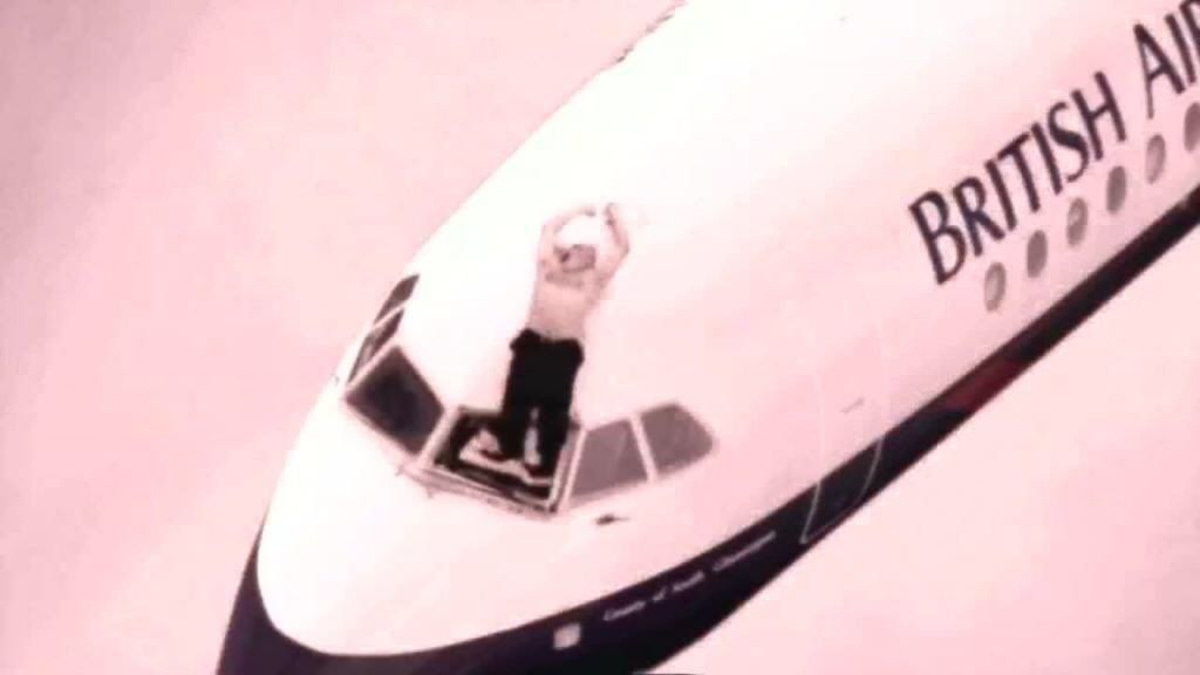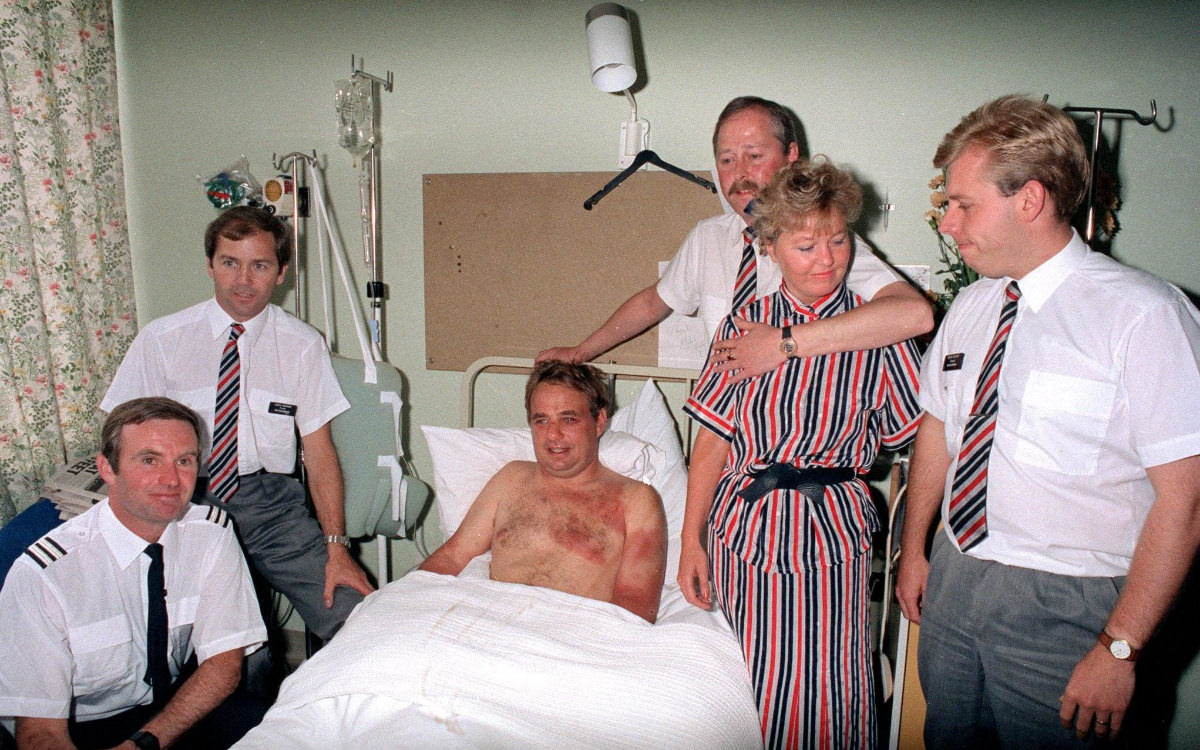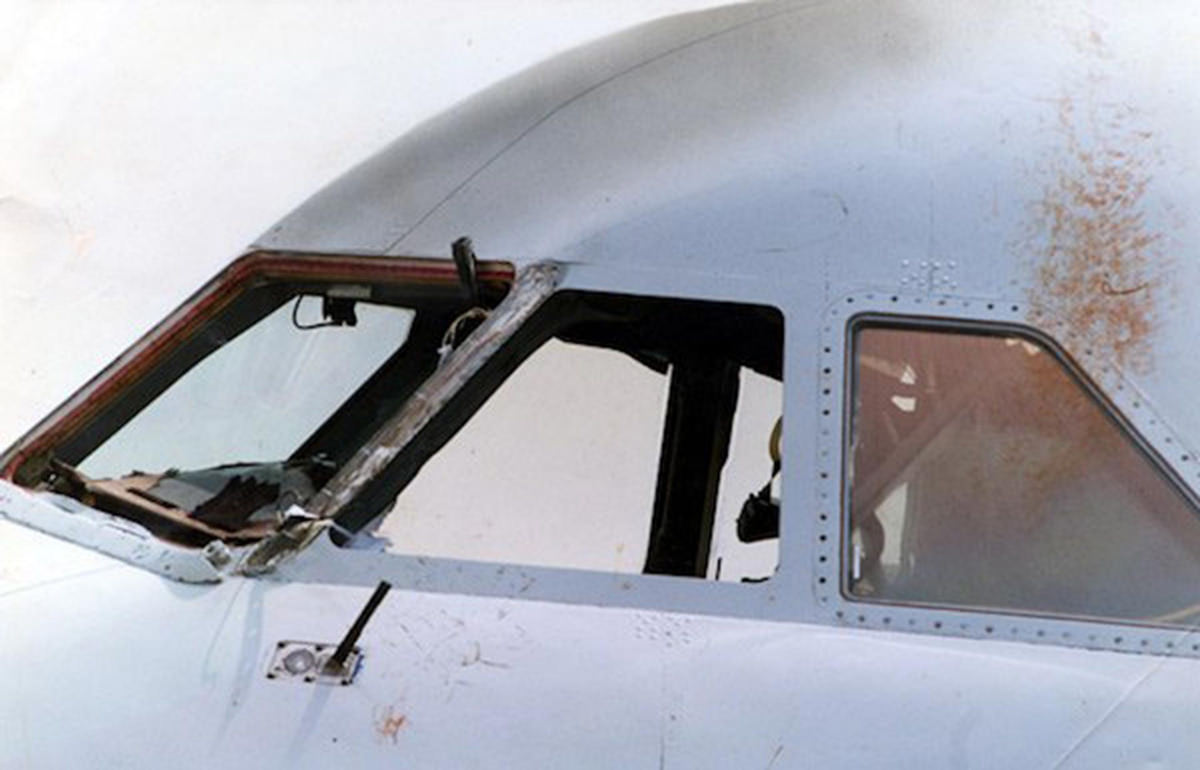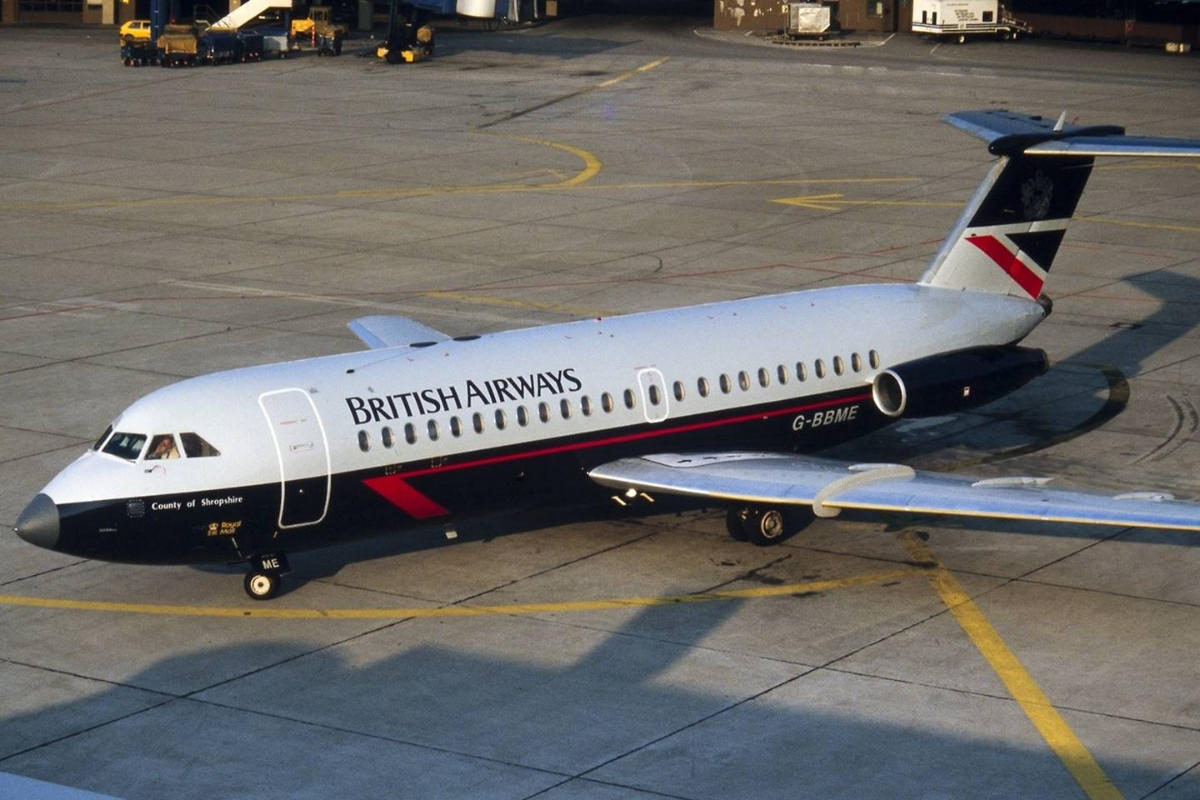Tim Lancaster was a British pilot who survived a terrifying incident in 1990 that occurred while he was flying a commercial flight from Birmingham to Malaga. The incident became known as the “British Airways Flight 5390,” and it quickly gained international attention.
On June 10, 1990, Lancaster was the co-pilot of British Airways Flight 5390, which Captain Alastair Atchison was flying. The flight was a routine trip from Birmingham, England, to Malaga, Spain, with 81 passengers on board. Approximately 20 minutes after takeoff, as the plane cruised at an altitude of 17,000 feet, the cockpit windscreen suddenly blew out, causing the plane to decompress rapidly. The windscreen had come loose from its frame and was pulled out of the cockpit, taking Captain Atchison with it. The sudden decompression caused Lancaster to be partially sucked out of the plane, with his upper body and arms flailing about in the high-speed wind.
Fortunately, Lancaster’s seatbelt held him in place, but he was left hanging out of the cockpit, with his head and upper body exposed to the elements. Despite his precarious situation, Lancaster managed to grab onto the co-pilot’s seat with one hand, preventing himself from being fully sucked out of the plane.
The crew, including Lancaster, remained calm under the extraordinary circumstances and managed to keep the plane under control. Lancaster’s colleagues, Flight Attendant Nigel Ogden and Captain Atchison, who was still partially outside of the plane, pulled Lancaster back into the cockpit by his belt. Lancaster was severely injured in the incident, with frostbite on his face, a broken arm, and several fractures to his right hand. He was taken to a hospital in Southampton, where he was treated for his injuries. Amazingly, he fully recovered and was back in the cockpit six months later.
The incident led to a thorough investigation by the UK’s Air Accidents Investigation Branch (AAIB), which found that the windscreen had come loose due to improper maintenance procedures. The AAIB recommended changes to maintenance procedures and to the design of the windscreen to prevent such an incident from happening again.
The incident also highlighted the importance of proper training and procedures for emergencies. The crew of Flight 5390 acted professionally and calmly, preventing what could have been a disastrous outcome. It also received widespread media coverage and was the subject of several documentaries and dramatizations. It also led to Lancaster becoming a well-known public figure, with many people inspired by his bravery and resilience in the face of such a terrifying experience.
Tim Lancaster’s survival
Tim Lancaster’s survival of the British Airways Flight 5390 incident was a remarkable feat that defied the odds. He was partially sucked out of the plane after the cockpit windscreen blew out, causing the plane to decompress rapidly. However, Lancaster managed to hold onto the co-pilot’s seat with one hand and was pulled back into the cockpit by his colleagues, preventing what could have been a disastrous outcome.
Lancaster’s survival was the result of a combination of scientific principles, physical and mental resilience, and the quick actions of his colleagues. The principle of air pressure and aerodynamics played a critical role in his survival, as did his grip strength and seatbelt. Additionally, his physical and mental resilience allowed him to remain calm and focused, which enabled him to take the necessary actions to save his own life.
The incident serves as a reminder of the importance of proper training and procedures for emergency situations and the critical role that human resilience and professionalism can play in preventing disaster. Lancaster’s survival is a testament to the incredible strength and resilience of the human body and spirit.
Here are some photos that depict the incident and its aftermath.








